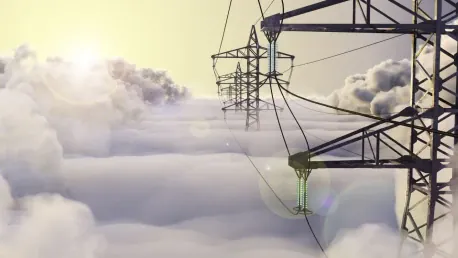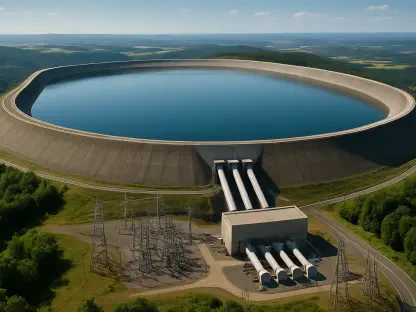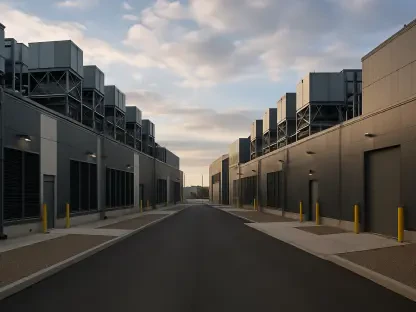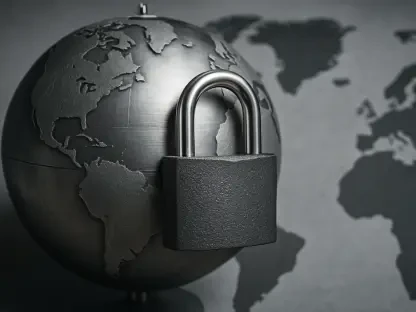In an evolving energy landscape, the U.S. faces a critical need for enhancing its long-distance electric transmission infrastructure. The U.S. Department of Energy’s (DOE) National Transmission Planning Study underscores the urgency, highlighting the role of interregional transmission lines in ensuring a reliable, resilient, and cost-effective energy grid. However, the journey from planning to realizing these infrastructure projects is riddled with challenges, particularly in the siting of transmission lines. This article delves into the multifaceted process of long-distance transmission enhancement, the obstacles faced, and potential innovative solutions.
The Imperative for Long-Distance Transmission
Importance and Necessity
The DOE’s study, which evaluated 96 future scenarios, clearly identifies long-distance transmission lines as essential for meeting future energy demands. Connecting renewable energy sources from remote areas to urban centers where energy demand is highest is pivotal in ensuring grid stability and reducing costs. Renewable energy is not merely a logistical challenge but a crucial step toward a sustainable energy future. This interconnectedness is key to integrating varied sources of renewable energy, such as wind and solar, which are frequently located far from the regions with the highest electricity consumption.
Moreover, the study demonstrates how these transmission lines can lower overall costs by optimizing the balance between energy supply and demand on a national scale. This kind of long-distance infrastructure allows renewable energy projects to thrive where the conditions are most favorable, whether that means solar farms in sunny deserts or wind turbines in consistently windy areas. Consequently, better transmission capacity can lead to more competitive electricity prices, benefiting both consumers and renewable energy producers.
Ensuring Grid Reliability
As the energy grid becomes more complex with increasing inputs from renewable sources, long-distance transmission lines play a vital role in maintaining stability. By linking diverse energy sources, they provide a buffer against regional disruptions, making the grid more resilient. This reliability is crucial for accommodating the variable nature of renewable energy sources like solar and wind, which are inherently intermittent. Energy can be transferred from regions with a surplus to those experiencing shortfalls, thus stabilizing the grid and ensuring a consistent supply of electricity.
For example, during a prolonged cloudy period affecting solar output in one region, energy generated from wind in another area can be transmitted swiftly to compensate. This interregional collaboration increases the grid’s resilience to individual disruptions, enhancing overall security of supply. Furthermore, having robust long-distance transmission lines mitigates the risk of blackouts and power shortages, which are increasingly concerning as climate change drives more extreme weather events. By enabling a broader distribution of renewable energy resources, these lines reduce the grid’s vulnerability to localized generation failures.
The Complexities of Siting Transmission Lines
Environmental and Community Impacts
One of the predominant challenges in developing long-distance transmission lines is the siting process. The placement of these lines can have significant environmental and community impacts. Poor siting decisions can lead to environmental degradation, disruption of ecosystems, and community opposition. For example, pathways that cut through protected habitats could harm wildlife populations and lead to loss of biodiversity, while routes that encroach upon private lands can generate significant resistance from landowners and local residents.
Conversely, careful siting can mitigate these effects, making it a cornerstone of successful transmission projects. By factoring in environmental impact assessments and engaging with communities during the planning stage, developers can avoid the most sensitive areas and secure public buy-in. Additionally, strategies that prioritize the least disruptive routes can minimize conflicts and hasten the approval processes. Effective siting thus not only conserves ecosystems but also fosters community support, which is essential for the success of new infrastructure projects.
Integrating Siting into Planning
A critical trend identified by the DOE study is the need for better integration of siting considerations into the planning phase. Historically, regional transmission organizations have focused on planning while developers handle siting, often leading to disjointed efforts. This fragmented approach can result in last-minute changes and delays when siting conflicts arise. Integrating these processes ensures that realistic pathways for transmission are identified early, reducing conflicts and delays later in the project lifecycle.
For instance, if environmental and community impact assessments are conducted in tandem with initial planning efforts, problematic areas can be avoided from the outset. This cohesive approach allows for more informed decision-making, blending technical feasibility with environmental stewardship. Moreover, it emphasizes the importance of interdisciplinary collaboration, where planners, ecologists, engineers, and community leaders work together to devise solutions that meet technical requirements while minimizing adverse impacts. Such integration not only streamlines project timelines but also enhances the likelihood of garnering the necessary approvals and support.
Leveraging Existing Infrastructure: Rights-of-Way
Advantages of Utilizing Rights-of-Way
A promising solution to the siting challenge is the use of existing infrastructure corridors, such as highways, railroads, and pipelines, known as rights-of-way. These routes already traverse various regions and could simplify the siting process, minimizing environmental disruption and accelerating project timelines. Utilizing these corridors can avoid new land disturbances and capitalize on already established routes, thereby presenting a lower-impact alternative to open land siting.
The benefits of this approach are manifold. Firstly, it reduces the need to clear new lands, thus preserving natural habitats and reducing the ecological footprint of the project. Secondly, using pre-existing corridors minimizes the risk of public opposition, as these pathways have already been accepted by local communities for other uses. Finally, this strategy can expedite the permitting process since the basic environmental assessments and community consultations have, to some extent, already been conducted for the existing infrastructure. This holistic approach can thus align environmental, technical, and community interests, paving the way for smoother project execution.
Case Study: Mid-Atlantic Corridor
The Environmental Defense Fund (EDF) and Horizon Climate Group highlight that current DOE corridor proposals can be improved by better incorporation of rights-of-way. For instance, the Mid-Atlantic corridor, crucial for meeting rising electricity demand, currently overlooks nearby existing infrastructure routes. Including these routes could streamline development and reduce public opposition, providing a blueprint for other regions. This case study suggests that a more strategic integration of rights-of-way could offer scalable solutions applicable nationwide.
Detailed analysis of this corridor reveals that certain sections, currently designated for traditional transmission lines, could benefit significantly from rerouting through adjacent highways and railroads. These changes could shorten the project timeline and reduce environmental impacts, ultimately leading to faster and more sustainable development of critical infrastructure. By leveraging existing transportation routes, the project can navigate complex regulatory landscapes more effectively, while also gaining broader public acceptance due to minimized new land disturbances.
Federal Transmission Corridors
Streamlining the Permitting Process
The DOE’s anticipated designation of ten federal transmission corridors marks a significant step in overcoming siting challenges. These corridors are high-priority areas where federal involvement can expedite the notoriously lengthy permitting process. By centralizing authority, these corridors aim to reduce delays and ensure that critical infrastructure projects can move forward more efficiently. Centralized federal oversight can simplify coordination among various state and local agencies, which often have conflicting regulations and priorities.
This streamlined approach not only accelerates project timelines but also improves the allocation of resources. Federal corridors can attract more investment by providing a clearer, faster path to project approval. The availability of these corridors sends a strong signal to potential investors about the government’s commitment to modernizing the grid, thereby encouraging private sector participation. Additionally, federal involvement can ensure that broader national interests, such as energy security and climate goals, are adequately prioritized over localized concerns, promoting an integrated national strategy for energy infrastructure development.
Analysis and Implementation
Detailed analyses by organizations such as the DOE and regional bodies are essential in refining these corridors. This involves evaluating the potential of transportation routes and other existing infrastructure to support transmission lines. A thorough assessment ensures that these corridors are optimally placed, balancing the need for efficiency with minimal environmental and community impact. Such analyses can identify the most viable and least disruptive pathways, thereby enhancing the overall feasibility and sustainability of the proposed projects.
Moreover, these assessments can inform crucial decisions about technology and infrastructure upgrades needed to support new transmission lines. For example, integrating advanced monitoring systems and smart grid technologies can enhance the efficiency and reliability of these corridors. A comprehensive approach that includes both siting analysis and technological innovation can thus provide the backbone for a modernized, resilient, and efficient energy grid. By combining data-driven insights with community and environmental considerations, the DOE can create a robust framework for future infrastructure development.
Recommendations for Future Development
Integration and Assessment
To avoid the pitfalls of current practices, a more integrated planning and siting approach is necessary. The DOE and regional transmission organizations should adopt models that incorporate environmental, health, and community impacts from the beginning. This holistic view ensures that ideal pathways are not overlooked and that projects can navigate potential hurdles more smoothly. Such early-stage integration can significantly reduce conflicts and delays, creating a more efficient development process.
Incorporating advanced planning tools and technologies, like Geographic Information Systems (GIS), can offer real-time data analytics, aiding in the identification of suitable sites. Furthermore, transparent stakeholder engagement from the onset can build trust and cooperation among community members, regulators, and developers. These inclusive methodologies ensure that environmental and community concerns are addressed upfront, fostering a collaborative atmosphere conducive to project success. By adopting an integrated approach, future transmission projects can achieve a balance between technical requirements and broader societal goals.
Strengthening Proposals with Rights-of-Way
In a rapidly changing energy landscape, the United States faces a significant challenge in upgrading its long-distance electric transmission infrastructure. The U.S. Department of Energy’s (DOE) National Transmission Planning Study emphasizes the critical need for improvement, particularly noting the importance of interregional transmission lines in supporting a dependable, resilient, and cost-efficient energy grid. Nevertheless, moving from the planning stages to the actual development of these infrastructure projects remains fraught with difficulties, particularly in the siting and permitting of transmission lines. The complexities of navigating regulatory approvals, securing environmental permits, and gaining community acceptance are notable obstacles. This article explores the intricate process of enhancing long-distance electric transmission, the various hurdles encountered, and the innovative solutions that could potentially overcome these barriers, making the vision of an upgraded grid a reality while ensuring sustainability and efficiency.









